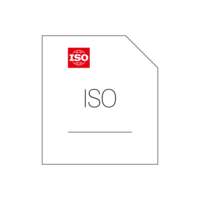

ISO 3341:2000
Ausgabedatum: 2000 05 04
Textile glass — Yarns — Determination of breaking force and breaking elongation
1.1 This International Standard specifies a method for the determination of the tensile breaking force and elongation
at break of glass yarns taken from packages.
1.2 The method is applicable to various types of glass yarn (single, folded, cabled, strands, structures without twist,
rovings, etc.). It is basically intended for single, folded and cabled glass yarns having a diameter of less than 2mm,
or a linear density lower than 2000 tex , taken from packages. Heavier yarns may be also tested providing the test
conditions are acceptable to all interested parties.
1.3 The method is not applicable to glass yarns which, in equilibrium with the standard atmosphere and under a
pre-tension of 5 mN/tex , are elongated by more than 0,5% . Such yarns can be tested using a lower pre-tension (for
example 2,5 mN/tex or 1 mN/tex ), acceptable to all interested parties. This would occur mainly when dealing with staple-
fibre yarns.
NOTE 1 Though the determination may be run on beamed yarn or on yarns taken from fabrics, the results must be considered
as indicative only.
NOTE 2 This test method is primarily intended for material characterization and quality control. Fibre-to-fibre abrasion and other
factors such as insufficiently uniform tension (catenary) will increase variability and generate low test values. This will consequently
impede accurate correlation between performance of the yarns and end use applications. Extreme care should be taken
in considering this method for specification purposes.
NOTE 3 Though this International Standard provides the possibility of determining the elongation at break, this practice is not
recommended, however. Indeed, a correct assessment of the elongation will only be obtained using an extensometer; it will not be
obtained by measuring the distance traversed by the moving clamp. On the other hand, experience shows that the use of an extensometer
is quite delicate and often causes damage to the specimen.
